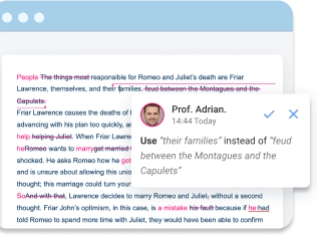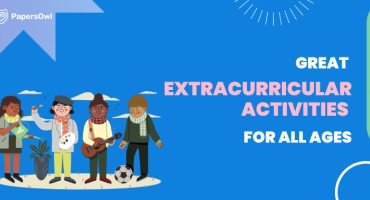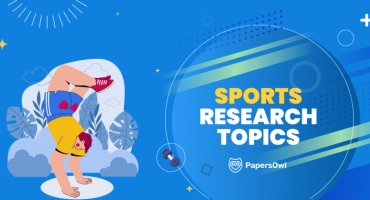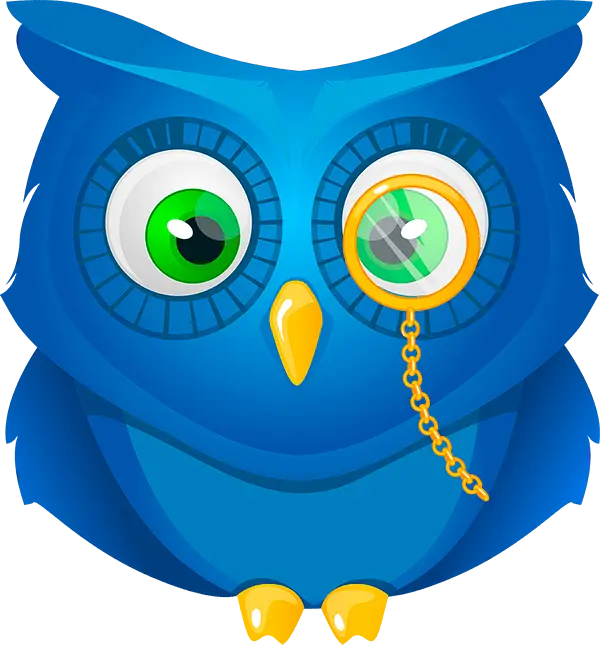Easy Team Building Activities For College Students
Table of contents
Team building activities for students are collaborative games and exercises designed to improve teamwork, communication, and problem-solving skills.
These activities, both indoor and outdoor, help students relax and build stronger relationships with their peers while developing essential skills outside the classroom.
In the modern educational process, team building plays a crucial role in fostering a collaborative learning environment, where students not only work together but also grow personally and professionally.
Engaging in team building promotes the development of key competencies like effective communication, creative thinking, and resilience — skills that are essential for success both in university and later in the workplace.
Incorporating team-building sessions regularly — whether weekly or monthly — can help students relax and connect with others, all while strengthening their ability to work in teams.

Team Building Tips For Students
The idea to start classroom team building activities can be initiated by different people. It can be a team leader, the head of the class, or any other people. To reach high-school or college educational success, people should work together and consider a means of entertainment that will be interesting for everyone.
Such things can help solve conflicts between people if there are such problems. Games help students understand the point of view of other people and accept it. They also improve collaboration and are similar to communication skills activities for students, which teach how to listen, speak clearly, and work together in groups.
However, team entertainment is also good if there are not any conflicts between members of the group. It is just a way to make connections deeper, learn to work with other team members, and use it to reach success in studying.
It is also a good opportunity to show your talents. If young people play a game that requires writing a speech about themselves, it helps uncover their talent to write interesting and attractive stories. If the goal is to play a specific book character, it helps to develop acting skills.
Games should be not very difficult because students would not relax. They also shouldn’t be too easy because they wouldn’t be interesting for students. It is good when team building ideas are original and include many different things to do.
10 Funny Team Building Exercises for Student Groups
Body Letters
Time: 15-20 minutes
Purpose: Encourage teamwork, physical coordination, and creativity.
Participants: 6-12 students (can be adjusted depending on group size)
Materials Needed: None (or markers and paper for optional instructions)
How to Play:
-
Prepare the Activity Space: Make sure there’s enough room for all participants to move freely. An open area with plenty of space for everyone to spread out works best.
-
Explain the Rules: Divide the group into smaller teams (ideally 3-4 people per team). Each team will be tasked with creating a letter of the alphabet using only their bodies—no props allowed.
-
Start with Simple Letters: Begin with easier letters like “A,” “H,” “O,” or “T.” The challenge is for each team to form the letter by positioning their bodies in creative ways—standing, sitting, lying down, or leaning against each other.
-
Increase Difficulty: As the teams get better at forming letters, you can introduce more challenging ones, such as “W,” “M,” or “Z,” which require more coordination and creative positioning.
-
Time Limit: Set a time limit (e.g., 2 minutes per letter). The team that forms the letter correctly and within the time wins that round.
-
Reflection: After each round, allow the teams to reflect on what strategies worked best and how they communicated to achieve the letter formations.
Desired Outcome:
This activity fosters teamwork and physical coordination while encouraging students to think creatively about how to use their bodies in unison. It also helps students practice non-verbal communication and collaboration. Plus, it’s a fun way to break the ice and engage students in physical movement!
Saboteur
Time: 30–40 minutes
Purpose: Encourage strategic thinking, collaboration, and adaptability.
Participants: 3–10 players
Materials Needed: Saboteur card deck (available in hobby/game shops)
How to Play:
-
Set Up the Game: Deal role cards—most players are miners working together to dig a path to hidden gold, while one or more are secret saboteurs trying to stop them.
-
Start the Digging: Miners play tunnel cards to create a path from the start card to one of the hidden gold cards.
-
Saboteur’s Role: The saboteur secretly disrupts progress by playing dead-end cards, breaking tools, or misleading others.
-
Special Cards: Players can fix broken tools, peek at hidden cards, or block other players.
-
Win Condition: If the miners reach the gold, they win. If the saboteur prevents them until the cards run out, the saboteur wins.
Desired Outcome:
The game trains students to think strategically under pressure, identify deceptive tactics, and cooperate with others to solve a shared challenge. It adds an element of suspense that keeps large groups engaged.
Exploding Kittens
Time: 15–20 minutes
Purpose: Build quick decision-making skills, adaptability, and light-hearted bonding.
Participants: 2–8 players
Materials Needed: Exploding Kittens card deck
How to Play:
-
Set Up the Deck: Shuffle the deck and deal cards to each player, placing “Exploding Kitten” cards back into the pile.
-
Take Turns: Each player draws one card from the deck. If it’s safe, the game continues.
-
Exploding Kitten Rule: If a player draws an exploding kitten, they’re out—unless they have a “Defuse” card.
-
Strategic Play: Other cards let players skip turns, peek at upcoming cards, or sabotage opponents.
-
Last Player Standing: The game continues until one player remains.
Desired Outcome:
This game teaches students to think quickly, manage risks, and adapt strategies under pressure—all while having fun and laughing together.
Continue the Story
Time: 15–25 minutes
Purpose: Develop creativity, collaboration, and listening skills.
Participants: Any group size (works well with 6–12)
Materials Needed: None (optional: pen & paper or voice recorder)
How to Play:
-
Start the Story: One student begins with a single sentence, e.g., “It was a dark and stormy night…”
-
Add-On Sentences: Each student in the circle adds one or two sentences to continue the tale.
-
Unpredictable Twists: Encourage funny, creative, or dramatic ideas.
-
Document the Story: Optionally, write down or record the final story for the group to enjoy later.
Desired Outcome:
The game strengthens imagination, encourages attentive listening, and builds a sense of shared creation. Students also practice storytelling and cooperation in a relaxed, enjoyable way.
Who Am I?
Time: 20 minutes
Purpose: Practice communication, logic, and problem-solving.
Participants: 6–12 students
Materials Needed: Sticky notes and markers
How to Play:
-
Prepare the Names: Each student writes the name of a famous person, fictional character, or historical figure on a sticky note.
-
Stick and Guess: Place the note on another student’s forehead without letting them see it.
-
Ask Questions: Players take turns asking yes/no questions to figure out their identity.
-
Win Condition: The first to guess their character correctly wins.
Desired Outcome:
This fun icebreaker helps students practice deduction, boosts general knowledge, and encourages clear questioning. It also sparks conversations about books, movies, and cultural icons.
Hear Me
Time: 15–20 minutes
Purpose: Improve listening, clarity of speech, and teamwork.
Participants: 6–10 students
Materials Needed: Headphones + device with loud music
How to Play:
-
Form a Line: Seat participants in a row, all wearing headphones with loud music.
-
Start the Chain: The first player removes their headphones and whispers a phrase to the next player.
-
Pass It On: Each student repeats what they heard to the next one.
-
Final Reveal: The last person in line says aloud the phrase they heard—usually completely different from the original!
Desired Outcome:
This game highlights the importance of clear communication while providing plenty of laughs. It shows how easily messages can get distorted, reinforcing active listening skills.
Tell About Yourself
Time: 10–15 minutes
Purpose: Build trust, foster openness, and strengthen group relationships.
Participants: Any group size
Materials Needed: None
How to Play:
-
Start the Circle: Students sit in a circle.
-
Share Facts: Each student shares an interesting fact about themselves (a hobby, funny experience, or hidden talent).
-
Continue the Rounds: After one round, repeat with new facts to learn more about each other.
Desired Outcome:
This activity encourages students to open up, discover common interests, and create personal connections in a relaxed setting.
Two Truths and a Lie
Time: 15 minutes
Purpose: Improve communication, observation, and social awareness.
Participants: 6–12 students
Materials Needed: None
How to Play:
-
Prepare Statements: Each student thinks of two true statements and one false one about themselves.
-
Share in Turn: Each player says their three statements aloud.
-
Guess the Lie: The group discusses and tries to identify the lie.
-
Reveal: The speaker confirms the truth and the lie.
Desired Outcome:
This game breaks the ice, encourages attention to detail, and helps students learn surprising facts about one another.
Seven
Time: 10–15 minutes
Purpose: Sharpen focus, quick thinking, and concentration.
Participants: 5–12 students
Materials Needed: None
How to Play:
-
Form a Circle: Students sit in a circle and begin counting aloud one by one.
-
Replace Sevens: Whenever the number is 7 or a multiple of 7, the player must say “buzz” (or another agreed word) instead of the number.
-
Elimination Rule: Anyone who makes a mistake is out. The game continues until one player remains.
Desired Outcome:
The activity boosts mental focus under pressure and encourages group alertness. It’s simple but highly engaging for students of all ages.
Action Intros
Time: 10–15 minutes
Purpose: Build creativity, confidence, and memory skills.
Participants: Any group size
Materials Needed: None
How to Play:
-
Choose an Adjective: Each student introduces themselves with an adjective starting with the same letter as their name (e.g., “Funny Fiona”).
-
Add an Action: They perform a simple gesture or motion that reflects the adjective.
-
Repeat as a Group: The next student repeats previous names + actions before adding their own.
-
Challenge: Continue until the last student must repeat all names and actions.
Desired Outcome:
This fun icebreaker helps students remember each other’s names, improves group bonding, and encourages self-expression.
Make Your College Team Successful
Team building activities are not just fun diversions — they help students strengthen communication, enhance creative thinking, and develop resilience. When classmates build trust and positive connections outside of class, they naturally bring that same energy into group projects and academic work.
While collaborative games are a great way to support teamwork, students sometimes also face challenges with written assignments.
In such cases, it’s helpful to know that resources exist where you can write my essay with professional assistance. Combining academic support with engaging team activities allows students to feel more confident, motivated, and prepared for both college life and future careers.
This balance of study, games, and creative extracurricular activities examples helps students develop a wide range of skills for both personal growth and professional success.








